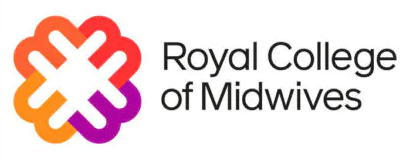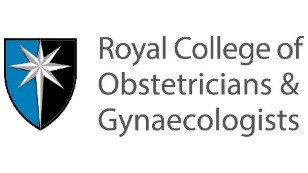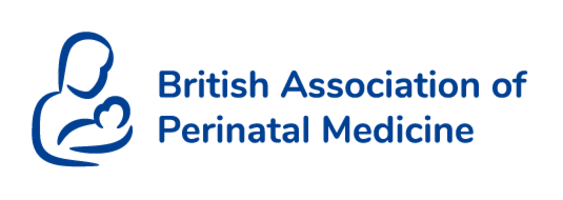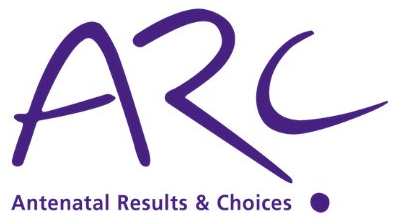Purpose and scope
In the UK there is wide variation as to whether signs of life are reported in babies born before 24 weeks of pregnancy and consequently inconsistencies as to whether these deaths are reported as a miscarriage or registered as a live birth and subsequent neonatal death[1][2]. Such variation in practice can lead to confusion and distress for parents and has implications for the accuracy of recording of national pregnancy, birth and neonatal death data. The purpose of this guidance is to support health care professionals in the assessment and documentation of signs of life in extremely preterm births where active survival-focused care is not appropriate.
The scope is confined to supporting health care professionals (including midwives, obstetricians, gynaecologists, neonatologists and nurses) in hospital settings in their assessment of:
- Spontaneous births before 22+0 weeks of gestation
- Spontaneous births at 22+0 to 23+6 weeks of gestation where, following conversations and agreement with the parents, active survival-focused care is not appropriate. See BAPM Framework for Practice on perinatal management of extreme preterm birth before 27 weeks of gestation[3] for decision making around obstetric interventions, or initiation of neonatal intensive care at extreme preterm gestations
The same principles also apply to spontaneous births <22+0 weeks in pre-hospital settings—see BAPM framework for practice on pre-hospital management of the baby born at extreme preterm gestation[4].
The scope of this guidance does not include
- medical termination of pregnancy
- spontaneous births of uncertain gestation
- spontaneous births at 22+0 to 23+6 weeks of gestation where initiation of active (survival-focused) neonatal care is planned or there is uncertainty regarding initiation of active neonatal care
These scenarios were given due thought but were felt to be outwith the guidance scope and would require separate consideration.
A summary of this guidance is also available.
Language used in this document
The terms 'parents' and 'baby' are predominantly used in this guidance because this is how many people choose to describe their situation in the context of a pregnancy ending in spontaneous birth before 24+0 weeks of gestation. However each situation is unique and there are those who would find these terms upsetting and would prefer to be addressed as individuals rather than parents, for the birth to be referred to as 'the end of the pregnancy' or as a 'miscarriage', and for the baby to be described as a 'fetus'. This guidance recommends that health care professionals actively listen and take the lead from the woman (and where appropriate, her partner) regarding preferred language.
Development of the guidance
A multidisciplinary working group was established comprising individuals and representatives of stakeholder organisations with expertise in this area including representatives from relevant Royal Colleges, professional associations, third sector stakeholders, academics and Government representatives. Following the first meeting a scoping review was performed for the purpose of developing this guidance regarding the assessment of signs of life in births at or before the threshold of survival. In the absence of evidence to form a basis for practice the working group endorsed a pragmatic approach to this challenging situation. The guidance presented here is guided by the limited evidence from the literature and by general agreement based on clinical practice, and represents the consensus view of the working group informed by a public consultation.
Assessment of signs of life
The assessment of signs of life for births included in the scope of this guidance should be undertaken while ensuring that care following birth is respectful and that the individual needs of the baby, the woman and her partner are prioritised at this difficult time. The midwife or other attending health care professional may observe for visible signs of life while holding or wrapping the baby and handing them to the parents (if the parents wish to hold the baby). Subsequent observation for signs of life should be discreet and respectful. Assessment should be based on persistent, readily evident, visible signs. Listening for a heartbeat with a stethoscope or palpation of the umbilical cord is not necessary. Evident signs of life after birth would include one or more of the following:
- easily visible heartbeat seen through the chest wall
- visible pulsation of the cord after it has been clamped
- breathing, crying or sustained gasps
- definite movement of the arms and legs
Since fleeting reflex activity including transient gasps, brief visible pulsation of the chest wall or brief twitches or involuntary muscle movement can be observed in babies that have died shortly before birth we recommend that such fleeting reflex activity observed only in the first minute after birth does not warrant classification as signs of life.
Assessment of signs of life should include the parents' observations if they wish to share them. It is important to recognise that there may be differing perspectives — see Communication with Parents.
In situations where there are visible signs of life, the process of confirmation of signs of life varies across the devolved nations.
- England, Wales and Northern Ireland
-
A doctor (usually the attending obstetrician) should be called to confirm the presence of signs of life. The role of the doctor in this circumstance is not to provide active survival-focused care but to support the parents and so that after the baby's death the doctor is able to complete a death certificate for the baby. This avoids the potential distress that can occur when the doctor cannot complete a death certificate because they have not seen the baby alive – see 'Birth and death certification and notification'. It is preferable for the baby to be seen by a member of the obstetric team, rather than the neonatal team as calling a neonatologist may result in confusion for the family, and a perception that the decision to provide comfort care, rather than survival focused care, was inappropriate.
If it is not possible for a doctor to attend in time to witness signs of life, following the baby's death the doctor and the attending midwife or other health care professional should sensitively discuss and together decide if signs of life were present. This discussion should include the parents' observations if they wish to share them.
- Scotland
- It is not necessary to call a doctor to confirm signs of life as observations provided by the attending midwife or other health care professional can later be used in completion of a death certificate without the doctor having been present prior to the death.
Care following live birth
If the baby is born showing signs of life appropriate comfort care should be provided following a perinatal palliative care pathway. Such care should be aimed at meeting the physical needs of the baby to minimise any distress they may be experiencing and also meet the physical, emotional and psychological needs of the parents. Support for this can be found in the "Together for Short Lives" pathway[5] and NICE Guidelines NG61 regarding End of life care for infants, children and young people with life-limiting conditions[6].
Sensitive communication with parents before birth
See also Language used in this document
This guidance is for births where active survival-focused care is not appropriate. Recommendations for conversations with parents about perinatal management of births before 27 weeks' gestation are provided in the BAPM Framework for Practice[3].
Spontaneous birth before 24 weeks' gestation is often a very distressing time for parents and they are likely to be unsure what to expect. When time allows before birth, a midwife or obstetrician should counsel parents clearly about potential signs of life and have a conversation about the intended plan of care taking into consideration parents' wishes for end of life care. Even where there is little time for in depth discussion prior to birth, a sensitive and compassionate brief explanation of the key points below may help to avoid misunderstanding:
- Babies born before 24 weeks of gestation are small and their lungs and other organs are not developed enough for them to live after they are born. Often they do not survive the birth process
- Some babies who have died a few minutes before birth may show some brief reflex movements after birth. However these do not constitute 'signs of life'. In such a case the baby's birth and death are not registered
- Some babies may survive birth and show signs of life such as an easily visible heartbeat, breathing or sustained gasps, or definite movement of their limbs. The length of time a baby will shows these signs is hard to predict and may be only a few minutes but can occasionally be up to a few hours. If this is the case a doctor will be asked to attend to confirm signs of life and comfort care will be provided (for example following the palliative care perinatal pathway outlined in 'Together for Short Lives'[5]). There will be a legal requirement for a parent to register the birth and death
Following birth it is important to include parents' observations (if they wish to share them) in discussions about the presence of signs of life. Healthcare professionals can gently revisit the information about reflex movements if appropriate.
Effective communication can reduce the impact of trauma on parents, both in the short and longer term. Parents are likely to need small pieces of information repeated more than once before, during and after birth. Guidance for health care professionals on sensitive and effective communication with parents experiencing loss is provided by Sands[7].
Bereavement care
All parents, irrespective of whether their baby is born showing signs of life, should (if they wish) be provided with choices and support around bereavement care, including time and privacy with their baby, opportunities to make memories and discussion of available options for burial, cremation or sensitive disposal of their baby's body.
Healthcare professionals should be aware of what their hospital can offer and allow time for parents to make decisions and decide what is right for them. The individual needs of the pregnant woman and (where appropriate) her partner should be central to the provision of care and any communication with them. Health care professionals should actively listen and take the lead from the woman and her partner regarding preferred terminology. It is important that healthcare professionals are sensitive to the responses and needs of parents from different cultural backgrounds and religious groups. However, it is vital that healthcare professionals do not make assumptions concerning culture and approach each parent as an individual needing support at an extremely difficult time.
Referral where appropriate to community postnatal care, GP and mental health teams should follow established local protocols. A parent-led bereavement care plan should be put in place for the family. This should follow the guidance outlined in the relevant National Bereavement Care Pathway in England[8] and Scotland[9] and locally developed bereavement pathways should be followed in Wales and Northern Ireland. Parents should be informed about available support services and referred as appropriate. There are several websites which may be helpful to parents who are required to register their baby's birth and death[10][11].
Birth and death certification and notification
The certification and notification procedures required in the UK differ for a live birth ending in a neonatal death compared to a birth where signs of life are not present.
Births where no signs of life are observed
In the UK a stillbirth certificate is only issued by the attending midwife or other health care professional for births at or after 24+0 weeks of gestation. For births before 24+0 weeks where no signs of life are observed, birth notification and birth and death certification are not required. Parents should be offered an unofficial 'certificate of birth' or 'certificate of pregnancy loss' from the hospital to acknowledge their loss but this should not be insisted upon if the parents decline.
Births where signs of life are observed—at any gestation
The legal requirements for death certification differ between Scotland and the rest of the UK (Box 1)
- England, Wales and Northern Ireland
-
If a doctor has been present to witness signs of life before death occurs that doctor must complete a neonatal death
certificate and where appropriate a cremation form (Box 1).
If death occurs before a doctor has witnessed signs of life and (following discussions between the doctor and the attending midwife or other health care professional) it is agreed that there were persistent evident signs of life after birth, the doctor must inform the coroner to allow a neonatal death certificate to be issued. - Scotland
- In Scotland the death certification process does not depend on a doctor personally witnessing signs of life. The doctor can rely on the history with which they have been provided by the attending midwife or other health care professional in order to verify the live birth. They can issue a death certificate without having been present prior to the death. There is no requirement for a doctor to discuss this scenario with the Procurator Fiscal unless the death falls within one of the categories of reportable deaths[12][13].
For all live births ending in neonatal death, a member of the care team must complete a birth notification and the family must register the birth and death. In England the death must be reported to the local Child Death Overview Panel (CDOP)[14]. In England and Wales the death will also undergo scrutiny by a Medical Examiner[15]. There is no statutory obligation to report all deaths to the Coroner/Procurator Fiscal. However, as a matter of child protection many local authorities have interpreted their safeguarding obligations to require compulsory reporting of all child deaths.
Any doctor who has concerns about the interpretation or application of this guidance should discuss the matter with professional colleagues, seek advice from their employer's ethics committee or legal advisors, and/or contact their medical defence organisation.
Box 1: Registration of birth, death and stillbirth in the UK
Live birth registration
If a baby is born alive regardless of gestation, it is a UK legal requirement that the birth must be certified and subsequently registered.
Neonatal death registration
It is a UK requirement to certify and register deaths of all babies born alive, regardless of the gestation at which the birth occurred.
- In England, Wales and Northern Ireland
- Legal certification that a baby lived and died requires a doctor to witness the baby prior to death. Where a doctor has not witnessed the baby showing signs of life, but signs of life have been observed by the midwife and/or parents, a doctor must notify the coroner (to confirm whether coronial review of the death is necessary) before issuing a neonatal death certificate.
- In Scotland
- Legal certification that a baby lived and died requires a doctor to witness signs of life or based on documented history be professionally accountable in certifying to the best of their knowledge and belief the baby showed signs of life.
Stillbirth registration
In the UK if a baby is born showing no signs of life at or after 24+0 weeks of gestation, there is a legal requirement to register the death as a stillbirth. If a baby is born showing no signs of life before 24+0 weeks of gestation, there is no legal certification or registration of the death in the UK.
Staff support
It is important to note that staff supporting families following the death of a baby can often be affected emotionally by the experience[16][17][18]. Emotional support and multidisciplinary debrief sessions following incidents like these, can help ensure future learning and prevent emotional trauma. Staff should be signposted to support services within their place of work and externally for further support if required.
MBRRACE-UK Signs of Life Guidance Development Group membership
(affiliations in parentheses)
- Lucy K Smith [Chair] (MBRRACE-UK Collaboration)
- Associate Professor, University of Leicester
- Clare Beesley
- Bereavement midwife, University Hospitals Birmingham
- Gabrielle Bourke (Royal College of Midwives)
- Policy Advisor, Royal College of Midwives
- Lia Brigante (Royal College of Midwives)
- Quality and Standards Advisor, Royal College of Midwives
- Audrey Brown
- Consultant in Sexual & Reproductive Health, NHS Greater Glasgow & Clyde
- Sharon Cameron
- NHS Lothian Consultant Gynaecologist and Professor (Hon), University of Edinburgh
- Sarah Corcoran (Scottish Government Children and Families Directorates)
- Team Leader, Maternal and Infant Health, Scottish Government
- Joanne Dickens
- Specialist Bereavement Midwife and Postgraduate Student, University of Leicester
- Elizabeth Draper (MBRRACE-UK Collaboration)
- Professor of Perinatal Epidemiology, University of Leicester
- Jane Fisher (Antenatal Results and Choices)
- Director, Antenatal Results and Choices
- Mandy Forrester (Royal College of Midwives)
- Head of Quality and Standards, RCM (until April 2019), Programme Lead, Each Baby Counts Learn and Support, RCOG
- Lauren Hutton (National Bereavement Midwives Forum)
- Senior Bereavement Midwife, Imperial College Healthcare NHS Trust
- Lesley Jackson (Scottish Neonatal Clinicians and Scottish Stillbirth Group)
- Consultant Neonatologist, The Royal Hospital for Children, Glasgow
- Jennifer J Kurinczuk (MBRRACE-UK Collaboration)
- Professor of Perinatal Epidemiology and Director, National Perinatal Epidemiology Unit, University of Oxford
- Corinne Love (Scottish Government Health and Social Care Directorates)
- Senior Medical Officer, Maternity and Women's Health, Scottish Government
- Helen Mactier (British Association of Perinatal Medicine & Royal College of Paediatrics and Child Health)
- Consultant Neonatologist and Honorary Clinical Associate Professor, Princess Royal Maternity and the University of Glasgow
- Sinead Magill (Northern Ireland HSC Public Health Agency)
- Business Manager, Northern Ireland Maternal and Child Health
- Amanda Mansfield (Royal Colleges of Midwives and the Joint Royal Colleges Ambulances Liaison Committee)
- Consultant Midwife, The London Ambulance Service NHS Trust
- Sheelagh McGuinness
- Reader in Law, University of Bristol
- Kate Mulley (Sands – Stillbirth and neonatal death charity)
- Director of Research Education and Policy, Sands
- Heather Payne (Welsh Government)
- Consultant Paediatrician, Senior Medical Officer, Welsh Government
- Heather Reid (Northern Ireland HSC Public Health Agency)
- Public Health Consultant, Northern Ireland HSC Public Health Agency
- Jane Scott (National Bereavement Midwives Forum)
- Senior Bereavement Midwife and Founder and Director of the National Bereavement Midwives Forum, Imperial College Healthcare NHS Trust
- Karen Todd (Department of Health and Social Care, England)
- Head of Maternity and Neonatal, Quality, Patient Safety and Maternity, Department of Health and Social Care
- Sarah Vause (Royal College of Obstetricians and Gynaecologists)
- Medical Director of St Mary's Hospital Managed Clinical Service and Consultant in Feto-maternal Medicine, Manchester University NHS Foundation Trust
- Dominic Wilkinson
- Professor of Medical Ethics, Oxford Uehiro Centre for Practical Ethics; Consultant Neonatologist, John Radcliffe Hospital; Senior Research Fellow, Jesus College
- Aimee Yarrington (College of Paramedics)
- Midwife and Paramedic, College of Paramedics
Acknowledgements
The authors appreciated the comments from the many organisations and individuals who responded to the consultation of an earlier draft of the guidance and would like to thank Anna Davies who collated the responses to the public consultation. They would also like to thank those who gave advice on specific parts of the guidance including members of the MBRRACE-UK Collaboration, the British Pregnancy Advisory Service, the Faculty of Sexual and Reproductive Healthcare of the Royal College of Obstetricians and Gynaecologists (Asha Kasliwal and Tracey Masters), British Society of Abortion Care Providers (Joanne Fletcher and Jonathan Lord) and Emily Jackson, Professor of Law, London School of Economics.
References
- Smith L, Draper ES, Manktelow BN, Pritchard C, Field DJ. Comparing regional infant death rates: the influence of preterm births less than 24 weeks of gestation. Archives of Disease in Childhood - Fetal and Neonatal Edition. 2013 Mar;98(2):F103-7.
- Manktelow BN, Smith LK, Evans TA, et al. MBRRACE-UK Perinatal Mortality Surveillance Report, UK Perinatal Deaths for Births from January to December 2013. Leicester: MBRRACE-UK; 2015.
- Mactier H, Bates SE, Johnston T, Lee-Davey C, Marlow N, Mulley K, et al. Perinatal management of extreme preterm birth before 27 weeks of gestation: a framework for practice. Arch Dis Child Fetal Neonatal Ed. 2020 May 01;105(3):232-9.
- Pre-hospital management of the baby born at extreme preterm gestation: A BAPM Framework for Practice [Internet]. [cited 01/03/2022]. Available from: www.bapm.org/resources/pre-hospital-management-of-the-baby-born-at-extreme-preterm-gestation.
- Together for Short Lives. A Perinatal Pathway for Babies with Palliative Care Needs (Second Edition). Bristol: Together for Short Lives; 2017.
- Aidoo E, Rajapakse D. End of life care for infants, children and young people with life-limiting conditions: planning and management: the NICE guideline 2016. Archives of disease in childhood - Education & practice edition. 2018 Dec;103(6):296-9.
- Sensitive and Effective Communication [Internet]. [cited 22/10/2020]. Available from: www.sands.org.uk/sites/default/files/Sensitive and Effective Communication.pdf.
- National Bereavement Pathway, England [Internet]. [cited 22/10/2020]. Available from: www.nbcpathway.org.uk.
- National Bereavement Care Pathway, Scotland [Internet]. [cited 22/10/2020]. Available from: www.nbcpscotland.org.uk.
- Who can register a birth [Internet]. [cited 22/10/2020]. Available from: www.gov.uk/register-birth/who-can-register-a-birth.
- Neonatal death information and support [Internet]. [cited 22/10/2020]. Available from: www.tommys.org/baby-loss-support/neonatal-death-information-and-support/registering-neonatal-birth-death.
- Crown Office and Procurator Fiscal Service. Reporting Deaths to the Procurator Fiscal - Information and Guidance for Medical Practitioners. . Scotland: 2015.
- Information following a death - guidance for medical practitioners [Internet]. [cited 22/10/2020]. Available from: www.copfs.gov.uk/investigating-deaths/deaths.
- Child death overview panels [Internet]. [cited 22/10/2020]. Available from: www.gov.uk/childcare-parenting/serious-case-reviews.
- The national medical examiner system [Internet]. [cited 22/10/2020]. Available from: www.england.nhs.uk/establishing-medical-examiner-system-nhs.
- Gandino G, Bernaudo A, Di Fini G, Vanni I, Veglia F. Healthcare professionals' experiences of perinatal loss: A systematic review. Journal of health psychology. 2017 May 3,;24(1):65-78.
- Wallbank S, Robertson N. Predictors of staff distress in response to professionally experienced miscarriage, stillbirth and neonatal loss: A questionnaire survey. International journal of nursing studies. 2013 Aug;50(8):1090-7.
- Shorey S, André B, Lopez V. The experiences and needs of healthcare professionals facing perinatal death: A scoping review. International journal of nursing studies. 2017 Mar;68:25-39.





